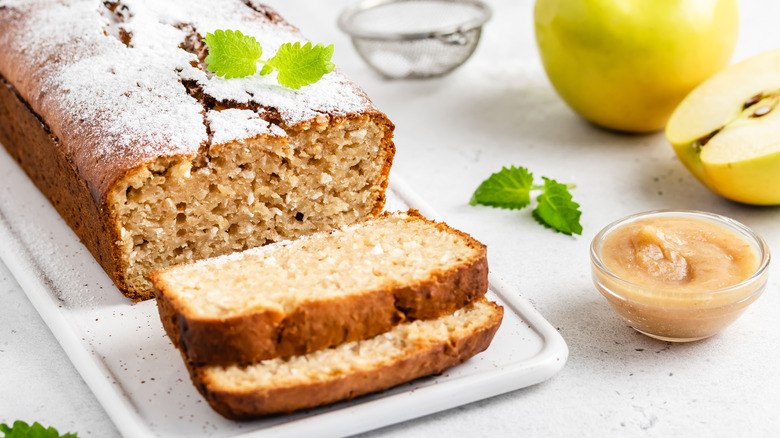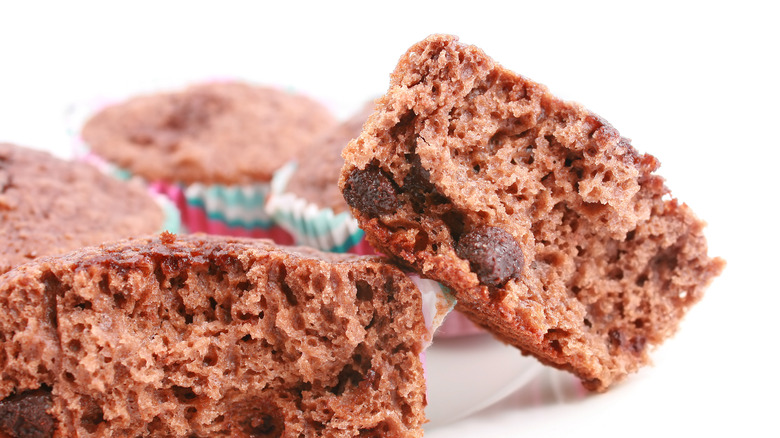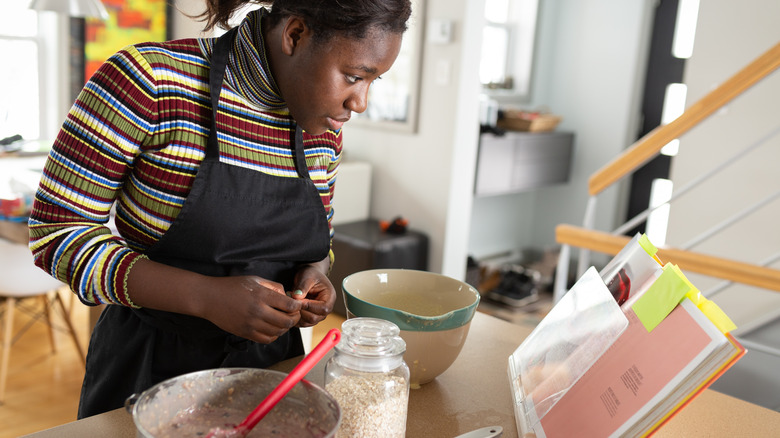Run Out Of Oil For Baking? Just Use Applesauce
Calling cooking oils healthy isn't an automatic misnomer, but they still represent the densest calorie source you can eat. While calories may not be the full story behind weight management, according to a 2021 study in Journal of Obesity & Metabolic Syndrome, they definitely matter. A lot. And if your goal involves reducing them a bit, an oil substitute may be just the baking ingredient you need. By replacing a lower-fat alternative in its place, you can still enjoy many of your favorite muffins, cakes, and brownies with a lighter hit on your calorie budget.
If applesauce isn't popping up foremost on your mind right now, it's not surprising. Most recipes don't offer the option of swapping out the oil because fat makes an unbeatable tenderizer and moisturizer in baked goods. Since applesauce is virtually fat-free, it's understandable if you've never considered it as an oil swap, but it does work.
Fortunately, this swap couldn't be easier: just replace applesauce for liquid oil cup for cup in baked goods. Until you determine the sweet spot for texture and crumb, start with replacing just a quarter to a half of your oil volume with applesauce. You can switch it out 100%, but the change will be more noticeable.
Applesauce enhances structure and chewiness
Even though applesauce is roughly 88% water, it cannot moisturize as well as oil since some of that water will evaporate during baking (unlike oil). Therefore, you'll probably appreciate an additional ingredient to make your cake extra moist. Raisins, soaked dried cranberries, grated raw zucchini, and candied ginger can all add a burst of moistness to make up for the steam losses.
Additionally, oil makes for delicate delectables because it inhibits formation of gluten, the protein responsible for flour-based products' chewiness and dense consistency. When you substitute a water-dominant ingredient like applesauce, your final result will be on the firmer side since water actually enhances gluten development. So it's true that applesauce will make your baked good chewier and more dense, but that can sometimes be an advantage. If you've ever tried cutting up your fudgy brownies, only for them to fall apart into a gooey mess, they may benefit from the stiffer structure applesauce confers. Same thing with sagging cakes that tend to stay under-baked in the middle.
Where should you make the swap?
So where does applesauce fit into the baking world? Well, if it's sweet, it's worth a shot. Muffins, quick breads, and brownies are a good starting point. Cakes also represent a worthy option, preferably strongly flavored varieties (like German chocolate or caramel) that will cover any subtle apple taste. Of course, an apple-based option like an applesauce spice cake offers an easy transition for those skeptical of this fruity fill-in.
That being said, applesauce can stand in for oil only when oil acts as a moisturizer in the recipe. Don't swap it in where oil serves to tenderize or prevent sticking. Applesauce really won't fit the bill there.
Actually, applesauce isn't the only player in the low-fat baking game. Pear sauce is a baking oil substitute that mimics many of applesauce's textural qualities, as well as its mild taste. Pumpkin puree, mashed banana, and blended beets can also be used, although their stronger flavor will prove more difficult to mask. Let good ol' applesauce become your reason to have your cake and eat it, too.


